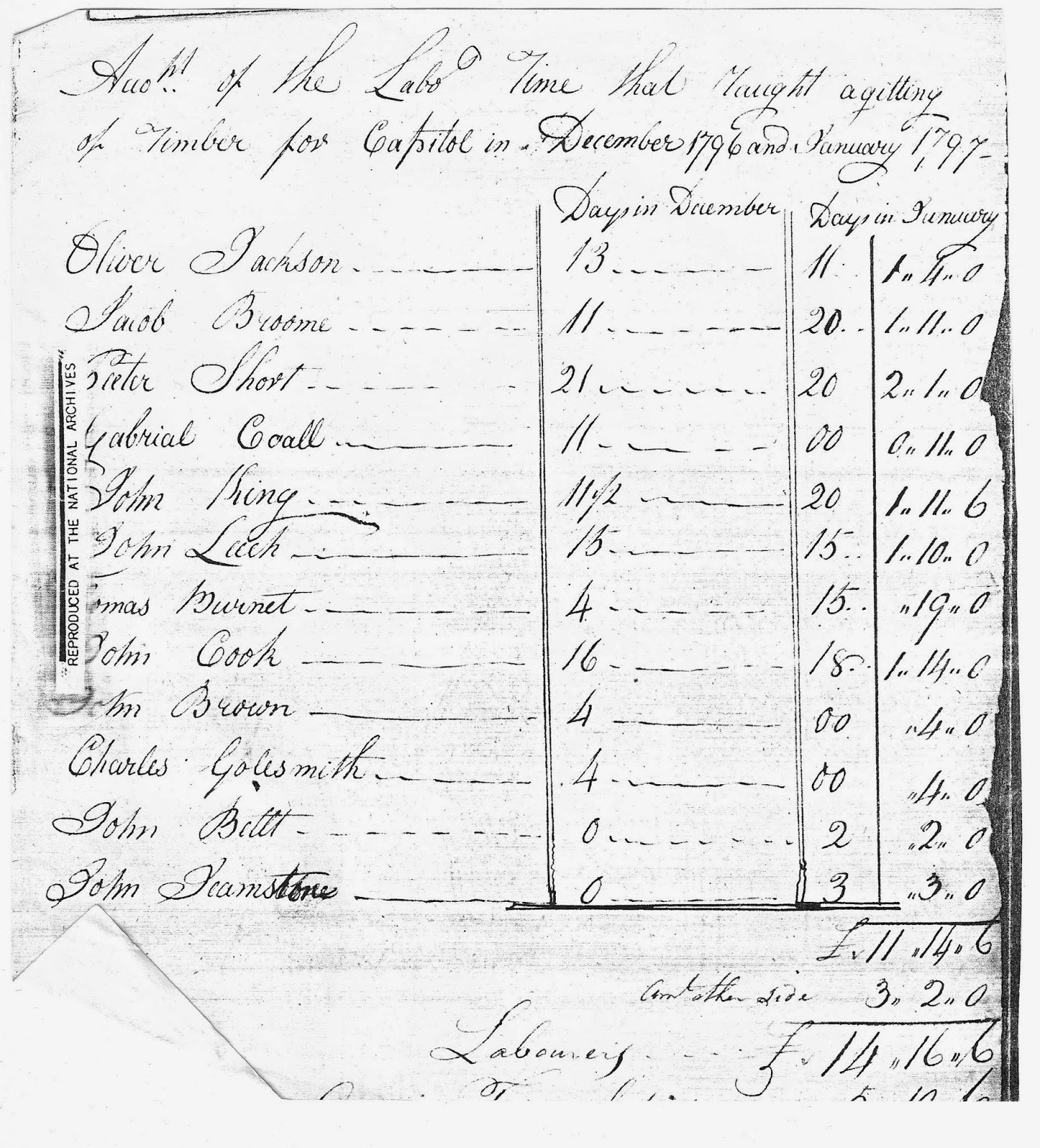"The point is that a large group of slaves with long saws, broadaxes and felling axes... got the job done."
Quote from Slave Labor in the Capital, page 63
This image is from a photocopy of the account of the days worked and wages earned by the hired slaves, one free black, their overseer, and the carpenter in charge of the expedition to Paint Branch, a tributary of the Eastern Branch, as the Anacostia River was generally called then, to cut the white oaks needed for timber for the White House roof. This was a rushed job. The commissioners contacted the land owner Walter Bowie on "31st (sic) November." Their men were cutting the white oaks two weeks later.
The usually the pace of work slackened before Christmas, especially for laborers. Perhaps because of that all the men who went to cut the wood were paid an extra wage of a shilling a day. In the payroll above, the hired slaves are noted as either sawyers or laborers. By this time sawyers customarily received a shilling a day in extra wages. Laborers rarely did.
That the slaves kept their extra wages is indicated by the absence of their master's name save for when slaves with the same name had to be distinguished, e.g. one Charles listed belonged to a man named Goldsmith, the other to a man named Rentzell. That Jacob Butler is a free worker is suggested by the lack of a comma between Jacob and Butler and other records. The shilling a day he received evidently supplement his usual day wage of 3 shillings.
The variation in the number of days worked probably reflects the need for some slaves to return to plantations relatively far away.
The circled number "59" notes that I used this information in Chapter 59 of my book Through a Fiery Trial."cutting wood" written on top of document is also my writing. I've long expected the National Archives to share these documents on-line. Until then you'll have to bear with my notes.
At the same time another crew cut white oaks for timbers for the Capitol's roof. Judging from the payrolls there were several free laborers in this crews. Slaves were often listed by their first name immediately followed by the name of their master, but most of the men below were free and judging from what I could glean from genealogy websites most were white. According to this payroll, they also got 1 shilling a day which I find confusing. I hope it supplemented the monthly wage they received but I have not found a payroll showing that. It was likely difficult for laborers to find work at this time of year which might have made even a shilling a day, salt meat, bread, and a special ration of brandy attractive for free workers.





No comments:
Post a Comment